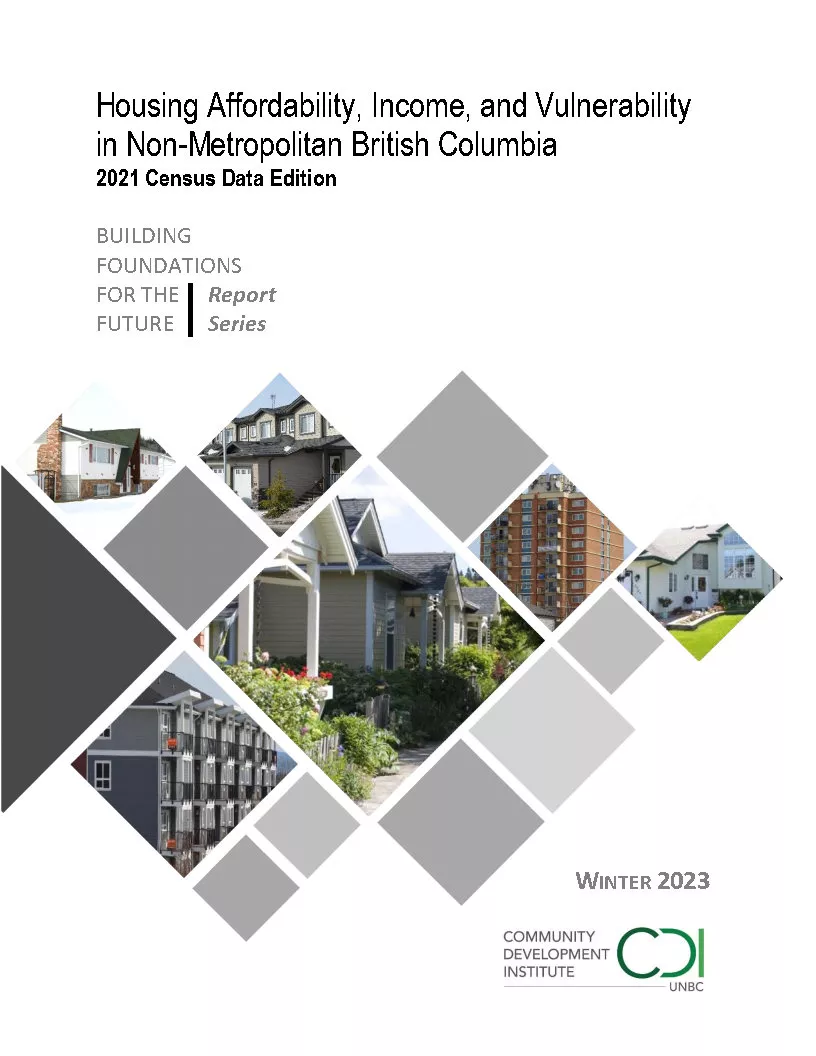Housing Affordability, Income, and Vulnerability in Non-Metropolitan BC
2021 Census Data Edition
Part of the "Building Foundations for the Future" Report Series

In many areas of non-metropolitan British Columbia, the state of housing has become a key constraint on economic and community development. Our previous housing research has pointed to a number of long-standing as well as emerging issues and challenges related to housing in non-metropolitan BC, and the resulting implications. This report highlights one of these issues: housing affordability.
At the community level, attention to housing affordability ensures that the community can attract and retain the workforce and other residents it needs to support broad economic activity and general social well-being. Non-metropolitan communities and households are particularly at risk for issues around housing affordability because much of the housing stock in these communities is old, not energy efficient, and in need of major repair. In addition, there is a mismatch between household size and housing size, suggesting that many households may be living in, and paying for, homes that are larger than they want or need.
This report features 40 Community Profiles, including our sample of non-metropolitan BC communities located in every region of the province and their average. Each of these profiles includes information on income distribution, household income in the context of shelter costs, and homeowner and renter housing cost vulnerability rates. Findings from this report include the following:
- In over two-thirds fo the sample, shelter cost increases for renters exceeded income increases.
- In one-third of the sample, shelter cost increases for homeowners exceeded income increases.
- In one-third of the sample, shelter costs for renter households exceeded shelter costs for owners.
The report structure allows each community to extract information that is relevant for them and their region and use it as a tool for analysis, strategic planning, and targeted action. The data is collected from the 2021 Census Program. A 2016 Census Data Edition accompanies the report to provide some recent, pre-COVID, historical context.
Housing Affordability, Income, and Vulnerability in Non-Metropolitan BC_2021 Census Data Edition
Be sure to visit our Housing Information Portal for more on housing in non-metropolitan BC and Canada.